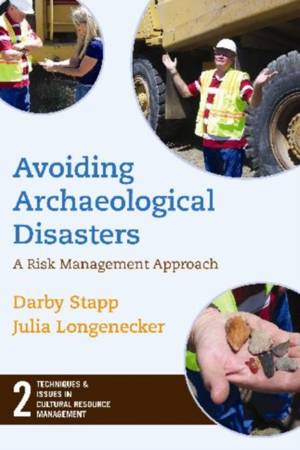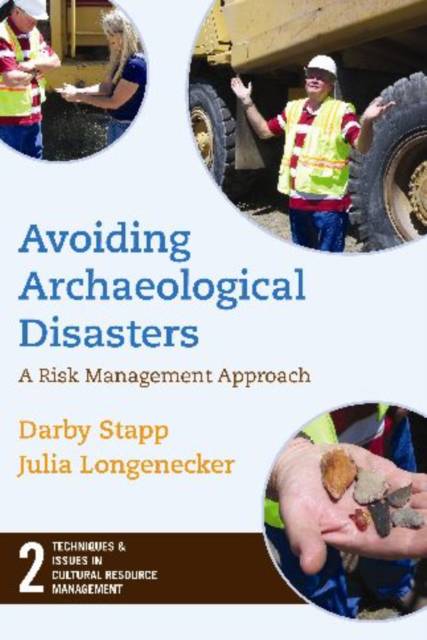
- Afhalen na 1 uur in een winkel met voorraad
- Gratis thuislevering in België vanaf € 30
- Ruim aanbod met 7 miljoen producten
- Afhalen na 1 uur in een winkel met voorraad
- Gratis thuislevering in België vanaf € 30
- Ruim aanbod met 7 miljoen producten
Zoeken
Avoiding Archaeological Disasters
Risk Management for Heritage Professionals
Darby C Stapp, Julia Longenecker
€ 195,95
+ 391 punten
Uitvoering
Omschrijving
You think it can't happen to you, but it can. One day, months into your construction project, your front end load operator runs into bones and wooden slats. Your county coroner says it is not a crime scene, and refers you to the local archaeology department. The archaeologist tells you that it is a very important discovery. Work stops. Archaeological discoveries happen all the time in the course of projects. Most are manageable, some are less so, and some are mismanaged, wasting time and money. If you are not prepared, the consequences can be disastrous. This book is for project engineers, project managers, construction managers, the staff of affected government agencies, and archaeological consultants. In its pages you receive enough information, enough archaeological perspective, to intelligently work with the various parties involved in your project and avoid an archaeological disaster.
Specificaties
Betrokkenen
- Auteur(s):
- Uitgeverij:
Inhoud
- Aantal bladzijden:
- 176
- Taal:
- Engels
- Reeks:
- Reeksnummer:
- nr. 2
Eigenschappen
- Productcode (EAN):
- 9781598741605
- Verschijningsdatum:
- 1/08/2009
- Uitvoering:
- Hardcover
- Formaat:
- Ongenaaid / garenloos gebonden
- Afmetingen:
- 152 mm x 229 mm
- Gewicht:
- 408 g

Alleen bij Standaard Boekhandel
+ 391 punten op je klantenkaart van Standaard Boekhandel
Beoordelingen
We publiceren alleen reviews die voldoen aan de voorwaarden voor reviews. Bekijk onze voorwaarden voor reviews.











